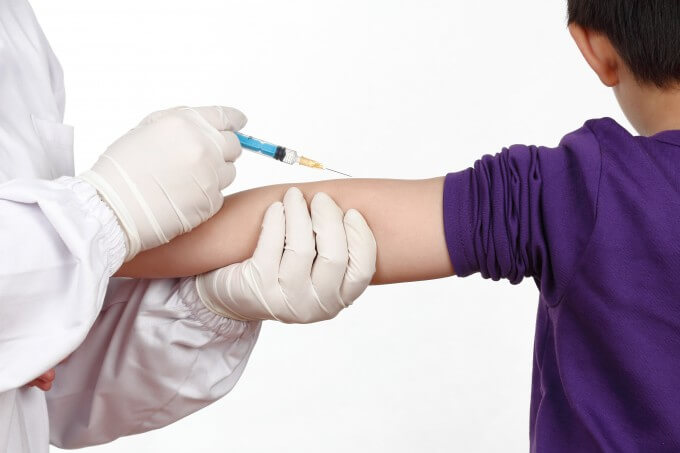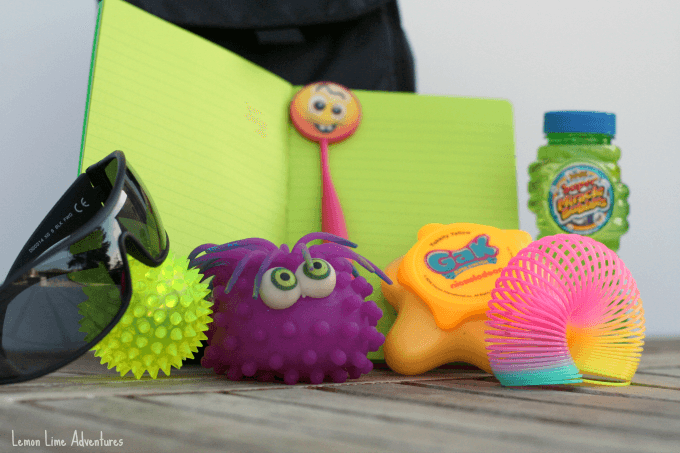This shop has been compensated by Collective Bias, Inc. and its advertiser. All opinions are mine alone. #collectivebias
Having a child with sensory needs means that every day things such as yearly checkups and doctor visits can become a nightmare. Add in vaccinations and sensory needs skyrocket. The anxiety surrounding the idea of getting a shot and the difficulty only rises, at least in my family. As part of the sensory survival tips I plan to share over the next year that I have learned from having a child with sensory processing disorder and anxiety, I will share some tips I have learned to help with the stress involved in taking your kiddo to the doctor or getting vaccinations.

Regular checkups and vaccinations are a part of every child’s life. Some children soar through these visits like a normal day, while others have a great deal of anxiety that can surround the days before and the day of any visit, making life for the parents (and the doctors) pretty miserable. While I know that this can affect all children of any shape, size, age, or capability, I want to share my experiences as it relates to raising a child with sensory needs.
Prepare
Prepare Yourself | Knowing your child, their triggers, their sensory needs, and how they react to certain situations will be incredibly helpful. Before I completely understood my son’s needs, I was not able to express myself to his doctors, advocate for his needs, or give him the support he needed. I suggest reading up on sensory needs, joining local or online support groups and preparing yourself with knowledge to boost your advocacy for your child. You are around your child every day, day in and day out. This gives you the capabilities to see how they react when they are touched, what happens when they are around new people, and when they see new things. If it helps, you can keep a journal to keep track of certain behaviors you see at each visit, so you can be better prepared at the next visit.
Prepare Your Child | Talk to your child about the upcoming visit to the doctor. What will they see, what will they hear, what will they feel? All of these are things your child might be thinking about, but is not able to verbalize their anxieties. This might mean you need to practice being touched, prodded, and examined. Try to role play what will happen at the doctor’s office and answer any questions your child might have ahead of time.
Prepare the Doctors and Nurses | I know this sounds silly. They are doctors… of course they will understand, right? Unfortunately, I have found this isn’t always the case. Especially when we are dealing with the office staff and the nurses. If you know before you visit some of the behaviors your child will exhibit, try calling ahead to have them make a note in the chart. One of my dear friends brings a short one page printout explaining sensory needs and what that might look like at the doctor’s office.
Validate
As I said before, going to the doctor and getting vaccinations can be scary for many children. Adding in sensory needs can make it even more difficult. It is important to not make your child feel like their feelings are silly and not important. A simple “I understand” or “It is okay to be afraid” can go a very long way. Instead of telling them to “not worry”, try giving them examples of times you have worried, or times they have overcome something just as scary before.
In addition to validating their anxieties and emotions, I think it is incredibly important to validate their sensory needs. When we are at the doctor’s office, my son has the intense need to touch and feel everything. He has a very hard sitting still in anticipation and he makes constant noises as a way to self soothe. I have learned that it helps when I validate his needs by telling him what I see “I see you are …., maybe you can try … instead.” 9 out of 10 times I find this helps him tremendously.
Support
Any time we go to the doctor (or any new place for that matter), I plan ahead of time for ways to support my son’s needs. For us, this means packing up an anti-anxiety tool kit and a few other items, and planning for sensory diet activities at the visit.
Heavy Work | The wait at the doctor’s office can be extremely long and provides a lot of time for the anxieties to build. During this time, my son and I usually do 3-5 items from his sensory diet that involve heavy “proprioceptive” work. This includes things such as chair push-ups, hand squeezes, and
Anti-Anxiety Kit | Once we are in the examination room, we pull out our handy little anti-anxiety kit which is filled to the brim with tactile and calming materials. I encourage my son to draw what he sees in the room, copy words from around the room, or write about something that happened earlier in the day. Often times this journaling distracts him from his anxieties and keeps him busy before the doctor arrives. The squeeze balls and the slime are great for tactile and proprioceptive input. They are great for the nervous fidgets and the need to touch everything in sight. My boys both love using the sunglasses for both protection from the bright lights in the exam rooms and as “secret agent” glasses to use during the shots that keep them from looking at the nurse while they try to give them the shot. We love our kit so much, it actually stays in the car and goes anywhere with us. Want to know the coolest part? All of the materials were purchased at Walgreens for under $20! Win! Win!
Breathing Exercises | Time for the shots. We have a few breathing exercises that we just love. If you are not familiar with any fun breathing techniques, you can bring along bubbles, allow your child to chew gum, or bring a few straws for them to practice pushing a paper scrap off the examination table.

I realize I am not the only mom with a child who struggles when they go to the doctor or face vaccinations. That is why I asked my Facebook community what they thought and how they help their children. Their answers were so good, I decided to just include them right here for you! I’d love to hear your thoughts and have you add to their great advice!
Did you know that our wonderful sponsor, Walgreens, is not only an easy place to stop for immunizations and back to school items this year, but that every time you get an immunization for kids at Walgreens you are helping them Give a Shot to a child in need. When your child gets their school immunizations, like whooping cough or meningitis at Walgreens, they will help provide a life saving vaccine to a child in a developing country through the United Nation Foundation’s Shot@Life Campaign.
Tell me, how do you help ease your child’s fears and anxieties surrounding vaccines and doctor visits? I would love to know! Don’t forget to connect with me on Facebook, Twitter, Google+, Pinterest, Instagram or subscribe by email so you don’t miss any of our next adventures.
Like This Post? PIN IT:






Thank you for sharing this important message! #client
Pingback: How to Help Your Sensory Child at the Doctor | Creekside Learning
I loved your advice to prepare yourself and your child for their vaccinations by learning their triggers and sensory needs. Knowing how they will react would definitely make it easier to handle when it happens. It would probably be wise to notify your doctor as well.